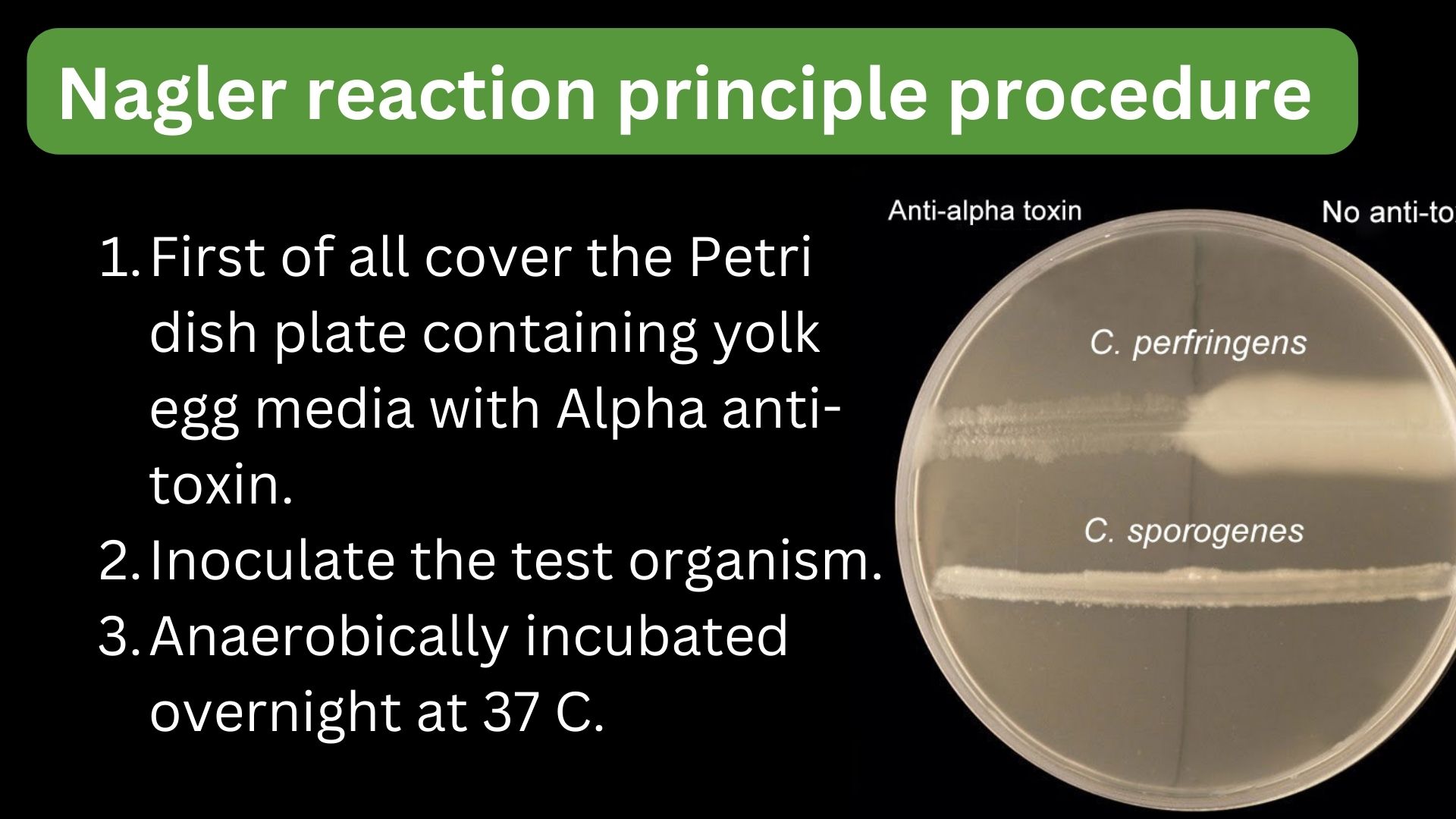The Nagler reaction test is used to identify the gram-positive bacilli clostridium perfringens. Clostridium perfringens have six serotypes from A to F, but only three A, C, and F types cause disease.
Clostridium perfringen causes gas gangrene and food poisioning.
Nagler reaction test principle
Clostridium per fringe bacteria produces lecithinase, which creates opalescence in the egg yolk media. This opalescence is neutralized by adding alpha anti-toxin.
Clostridium perfringens Nagler reaction procedure microbiology
- First of all cover the Petri dish plate containing yolk egg media with Alpha anti-toxin and allowed it to dry.
- Inoculate the test organism in the form of streaks.
- Note: Take care, start the inoculation from the side there is no alpha anti-toxin and move toward the anti-toxin area on the Petri dish.
- In the same manner, some positive and negative organisms are also inoculated.
- The plate is anaerobically incubated overnight at 37 C.
- Read the plate. Nagler test positive organism (Lacithinase producing) will show opalescence, but no opalescence where there was anti-toxin. This show that lecithinase synthesized by the bacteria neutralized the anti-toxin.
Here is the video of Clostridium perfringens Nagler reaction principle procedure.
What is Positive Control in the lecithinase reaction test?
Clostridium perfringens is used as a positive control organism.
What is Negative control in the angler’s test?
Clostridium sporogenes can be used as a negative control.
What is the Nagler reaction test in microbiology?
The Nagler reaction test is used to identify the clostridium per fringe. Clostridium per fringe produces an alpha-toxin which damages the lecithin of the cell membrane. Alpha anti-toxin is added, which neutralizes the alpha-toxin of the clostridium per fringe.
